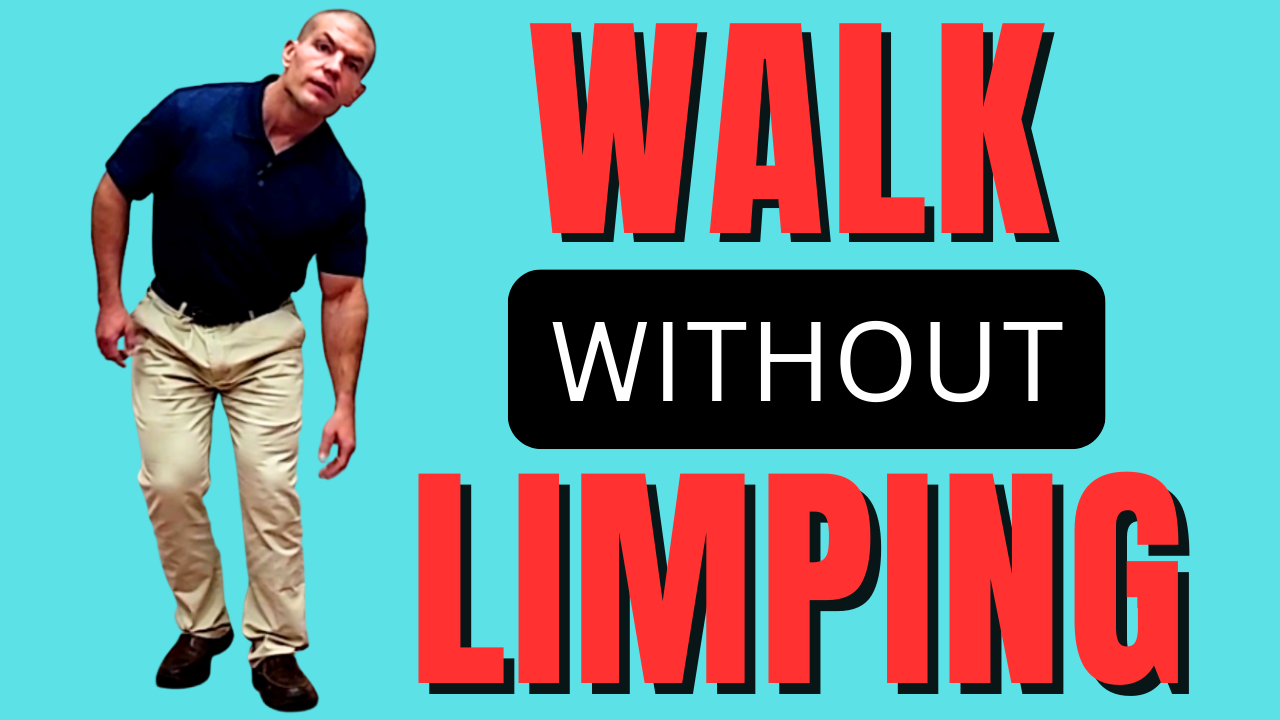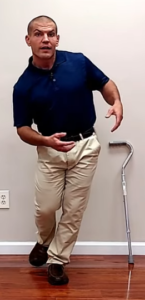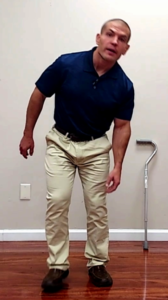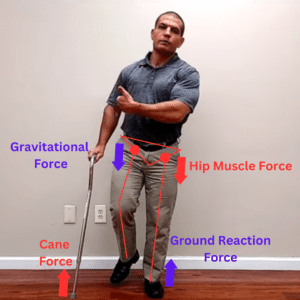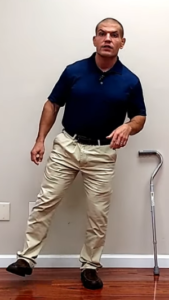Do You Limp When You Walk?
If you limp when you walk and you'd like to find out how to stop, make sure to watch this video. You'll learn some of the most common reasons why people limp, a few of the most common limping patterns, and how to fix each of them.
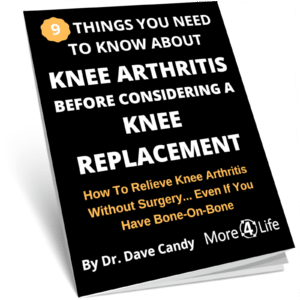
What Causes Limping When You Walk?
A lot of people think that limping is due to pain... and sometimes it is. But limping can be either an effect of pain or a cause of pain.
Why Pain Causes You To Limp?
In the case where limping is the effect of pain, it's actually a good thing... to a certain extent. For example, if you're out hiking in the woods and you sprain your ankle, you don't want to put weight on it and injure it further.
However, you still have to get back to safety. Therefore, your body reflexively and automatically changes your walking pattern to allow you to get back to safety without causing more damage to your injured body part.
Pain and Injury
Now, the funny thing about pain is that it doesn't necessarily mean that you've actually injured a body part. It's just that there's the potential to have damaged it or the potential to further damage it.
Therefore, your brain produces an unpleasant sensory and emotional experience known as pain to make us stop doing what we're doing. It's a warning signal telling you to stop.
For example, in the case of a sprained ankle, your brain tells your body to change your walking pattern so that you don't potentially cause further damage to the ligaments or bones in your ankle.
That's good in the short-term. However the longer you continue the limp, it can becomes a habit.
When Limping Becomes A Habit
The longer you limp, it can reprogram your nervous system and become a permanent and lasting habit.
After people have had a hip or knee injury, they may continue to limp even after the pain goes away. In some cases, people still walk with a limp after they've had a hip or knee surgery.
They continue to limp because they've reprogrammed their brain and to some extent your spinal cord.
Reprogramming The Brain
If you think about walking like a computer program, it runs automatically without you having to actively think about it. That's the reason why you're able to walk and chew gum or walk and have a conversation without tripping and falling.
However, when you've walked with a limp for a period of time, it rewrites that computer program so that the limping pattern becomes the normal program. Furthermore, the "new normal" program stays that way until you rewrite the program again.
So, even after the initial injury is healed, limping can actually become a lasting issue... unless you make a conscientious attempt to stop it.
It is important to learn how to walk without a limp.
That's a problem because limping can also be the cause of pain!
If you're limping because of a past injury and your limp becomes your new walking pattern, you can develop muscle imbalances that lead to future injuries. So, if you've developed a limp, it's important to stop it as quickly as possible.
How To Walk Without A Limp
In the case of an acute injury where you've actually injured a body part, it's a good idea to use an assistive device. That may be crutches, a cane, or a walker.
The longer that you continue to limp, the more likely that it will cause a permanent change to your walking pattern.
DMI Sports Walking Cane and Stick for Ad...
$22.76 (as of July 26, 2024 03:25 GMT -05:00 - More infoProduct prices and availability are accurate as of the date/time indicated and are subject to change. Any price and availability information displayed on [relevant Amazon Site(s), as applicable] at the time of purchase will apply to the purchase of this product.)Will Walking With A Cane Make Me Weaker?
Many people fear that using a cane will make them weaker or become dependent on it. This belief is particularly true in older people who have seen their parents start using a cane or walker and never to come off of it.
So it brings about a deep-seeded fear of physical decline and mortality.
Walking with a cane does NOT make you weaker.
In fact, the opposite is actually true. If you have pain and are not using an assistive device, your brain can reflexively turn the muscle off.
Walking with a limp actually makes you weaker.
That's because you're using other muscles or your body weight to avoid using that injured body part.
Conversely, using an assistive device like a cane allows you to use just as much effort or force out of the muscles as you're currently able to perform, without causing further pain or further damage.
As a result, it is a good idea to temporarily use an assistive device if you can't walk without a limp until you're able to walk normally again.
This separate post shows how to walk with a cane properly if you need some help or guidance.
Instead, I'll describe 3 of the most common limping patterns and how to stop them so that you can walk without a limp.
Limping Pattern 1: Tipping To The Side When Walking
This first limping pattern is by far the most common.
Namely, that's leaning too far to one side or going too far to the other side.
This type of limp is usually due to hip weak hip abductor (gluteal) muscles, but they can be from different conditions.
For example, if you have a gluteal tendinopathy or a tendonitis of the muscles and tendons in your hip that run over the outside of the hip, it hurts when you hold your body weight level.
So, your brain will either reflexively shut them off causing you to tip away from your stance leg.
Alternatively, you may lean toward the weak leg to shift you center of gravity over top of you stance leg.
This way your muscles don't have to work as hard to balance you.
The first pattern can lead to an overstretching of the IT band causing IT band hip pain or hip bursitis.
And either of these limping patterns can lead to lower back pain.
It is really important to stop limping.
In the short-term, using a cane in the opposite hand as the sore leg can help you steady and balance yourself better.
But in the long term, if you're having a side-to-side limping pattern, it's a good idea to practice balancing on one leg and being able to keep your pelvis level.
You may need to use a cane or hold on to a chair or a wall for balance and safety initially.
Think about squeezing the muscles on the side of your hip to help hold your belt line level with the floor.
Hold for five to ten seconds initially and work up to 30 seconds or more.
Research shows that people who are able to stand on one leg for 10 seconds or longer are less likely to fall and more likely to live longer.
Therefore, being able to balance is really important, especially for seniors.
Limping Pattern 2: Not Bending The Knee When You Walk
The limping pattern is called circumduction.
During circumduction, your leg is being swung around to the side without bending your knee.
This commonly happens after a knee injury or a knee surgery. For example, if you've had a total knee replacement, you will have a dressing around your knee for several days that restricts how much you can bend your knee.
Initially, you may have to walk this way for the first few days. However, you will want to get back to bending your knee as you swing your leg forward and directly underneath your hip as soon as possible.
Failure to do so can cause lower back or hip pain in the opposite leg in the future.
How to fix a stiff-knee gait
Initially, you need to regain your knee range of motion, especially after a knee surgery. However, you do not need to bend your knee that much in order to walk normally.
One of the easiest ways to break that habit of circumducting your hip is by pushing off the toes of your back foot to propel yourself forward. This action creates a natural knee bend that allows to swing your foot through.
Therefore, think about pushing off the toes of your foot when you have difficulty bending your knee when walking after a knee surgery. That'll create a natural tendency to swing that leg through as you're walking.
Limping Pattern 3: Wide-Base Gait
The third problem is having a wide-base gait while teetering to the side. This is often due to balance problems.
This type of limping pattern is seen in people with increasing age or with neurological disorders.
How to fix a teetering gait
To remedy this limping pattern, having wider base of support makes it harder for your body to fall outside of that base of support.
As a result, you don't want to keep your feet too narrow, like you're walking on a tightrope, but you also don't want them really wide apart.
A good reference is to try to keep your feet in line with your hips and pushing off your toes while maintaining the hip-width distance between your feet.
Since this is also balance issue, practicing to stand on one leg is a good exercise. It can help you to become more stable on your feet so that you don't feel like you need to walk quite as wide.
Miscellaneous Gait Pattern
Another common gait biomechanic concept that people ask is: "My foot/toes naturally turn out to the side, do I need to force them inwards?" And the answer to that is no.
People are built differently from each other. Some people have hips that naturally turn out, while others have hips that cause them to toe inwards.
When you stand and allow your feet to naturally fall into its resting position, that's probably the "normal" pattern that you're going to walk.
Do not try to force your feet to face a certain way, especially when you do not have pain. You can actually create more problems by forcing your feet to go somewhere where they don't naturally go.
Therefore, find the pattern where you would normally stand in and then just walk with your feet in that same orientation.
Conclusion
Hopefully this post helped you learn you learn how to walk without a limp.
If you're in the St. Louis area and you need some more help to relieve pain or walk without limping, we'd be happy to help you here at More 4 Life.
Just tap the button below to request an appointment with one of our specialists.

